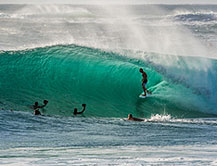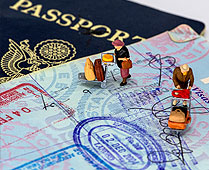NAATI Certified Translation for Milparinka
Certified translation examples from Sydney Translation Services.
Driver License
Birth Certificate
Passport Translation
Marriage Certificate
Death Certificate
Divorce Certificate
Degree Certificate
No-Criminal Record
The Gupapuyngu Language

- Unique Phonology: Gupapuyngu, a Yolŋu Matha language of North-East Arnhem Land, features a rich phonological system with distinct sounds that are uncommon in many other languages. Translators must be attuned to the specific sounds and pronunciations to accurately convey meaning, especially when dealing with oral histories or culturally significant texts.
- Oral Tradition: Gupapuyngu is traditionally an oral language, with written forms developed more recently. As such, much of the translation work involves transcribing spoken language, which requires a deep understanding of cultural context and oral storytelling techniques.
- Contextual Sensitivity: Many words and phrases in Gupapuyngu are deeply tied to cultural practices and the local environment. Translators need to ensure that these cultural nuances are preserved in the translation, especially when dealing with ceremonial or traditional knowledge, where mistranslation could lead to significant misinterpretations.
- Translating Legal and Educational Documents: Gupapuyngu is increasingly used in legal and educational contexts, especially in the Northern Territory. Translators working on these types of documents need to ensure that the correct legal and academic terminology is employed, respecting both the traditional language structure and the specific requirements of official communication.
About Milparinka
 Milparinka is a small settlement in north-west New South Wales, Australia about 250 kilometres (155 mi) north of Broken Hill on the Silver City Highway. At the time of the 2006 census, Milparinka had a population of 55 people.
Milparinka is a small settlement in north-west New South Wales, Australia about 250 kilometres (155 mi) north of Broken Hill on the Silver City Highway. At the time of the 2006 census, Milparinka had a population of 55 people.
In 1844 Charles Sturt's expedition was stranded for six months at nearby Preservation Creek, owing to a lack of supplies. Gold was discovered in the 1870s and a rush commenced in 1880. The mostly male population peaked at 3,000, with W.H.J. Slee being appointed the resident Goldfields Warden in January 1881. Cobb and Co coaches ran three times a week from Milparinka to Wilcannia, and by August 1881 the official gold escort had carried about 10,000 ounces of gold from the field, not to mention that which went privately.
In this arid region, water was so scarce that miners got their gold by dry blowing. Water was selling for one shilling per bucket and dysentery was rife, until in September 1881, on the recommendation of W.H.J. Slee, the New South Wales government authorised the drilling of a well. In December 1881 the government well struck water at 140 feet, which caused great relief to all.
Other Gupapuyngu Translation Service Locations
Grange Gupapuyngu Translator, Lightning Ridge Gupapuyngu Translator, Lithgow Gupapuyngu Translator, Mittagong Gupapuyngu Translator, Mount Annan Gupapuyngu Translator, Mount Kembla Gupapuyngu Translator.




 Milparinka is a small settlement in north-west New South Wales, Australia about 250 kilometres (155 mi) north of Broken Hill on the Silver City Highway. At the time of the 2006 census, Milparinka had a population of 55 people.
Milparinka is a small settlement in north-west New South Wales, Australia about 250 kilometres (155 mi) north of Broken Hill on the Silver City Highway. At the time of the 2006 census, Milparinka had a population of 55 people.